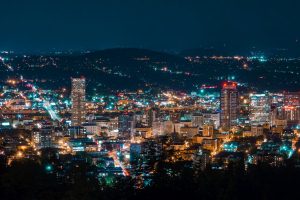Global market report released on self-powering smart cities to 2028

IDTechEx Research has released a Global Market Report on Self-Powering Smart Cities 2018-2028. The report covers producing electricity from city roads, windows, buildings, barriers, wind, water, BIPV and more.
The 160+ page report has new infograms, forecasts, roadmaps and technology comparisons embracing activities of 241 organisations. It is intended for distributed energy technology developers and users, property, road and campus developers, electricity utilities, urban planners, legislators and architects.
According to the authors, we have entered a golden age where beautiful and sometimes invisible Building Integrated Photovoltaics (BIPV) is a practicality rather than an expensive dream. New technologies are assessed in depth, some invisibly retrofittable like photovoltaic window coating and glass that powers its own electrically-operated darkening for privacy and climate control. This hugely increases the addressable markets. We show how this can be on a national grid, using the grid merely as back up or fully off grid.
The report starts with an Executive Summary and Conclusions for those in a hurry as it explains definitions, microgrids to megagrids, good and bad practice, technology preferences and futures with 12 pages of detailed forecasts at the end.
After the introduction chapter putting it all in context, there are chapters on urban wind energy including a full appraisal of Airborne Wind Energy to be first commercialised in 2018, urban photovoltaics including how we shall achieve transparency and doubling efficiency, Building Integrated Photovoltaics BIPV in action then a chapter on self-powered multifunctional windows and glass.
The seventh chapter appraises electricity generating roads, paths, fences and road furniture and the report closes with a good look at urban blue energy from river and sea: most cities are on one or the other. The emphasis is in on commercialisation and emerging options with real depth.
It is said to be the first to give a 20-year roadmap of the whole picture, importantly embracing more than the buildings, because, for example, solar paths, fences, road furniture (bus and vehicle charging shelters, signage, lamp posts) and roads together can be the dominant part of the electricity generating package. Learn of a 10MW car park working today.
The emphasis is analytical not evangelical. It exposes bad practice as well as good and benchmarks practice in other industries that should be transferred. IDTechEx Research assesses the many new forms of photovoltaics from that three times as efficient to flexible and/or transparent PV technologies for windows. Learn complementary technologies coming along. For example, a solar road can also capture movement using piezoelectrics and vertical wind turbines down the centre of a road can harness wind from traffic.
The researchers throw in some dreams as well, because this is a subject where dreams today become practicality tomorrow. Do you want to help emerging nations to prosper without pollution? Do you look for freedom from national grid problems from terrorism, natural disasters, monopoly pricing and neglect?
Only this report, “Self-Powering Smart Cities 2018-2028” critically covers the whole urban electricity generation picture focusing only on zero emission and looking forward all the way to 2050.
Comment on this article below or via Twitter @IoTGN
